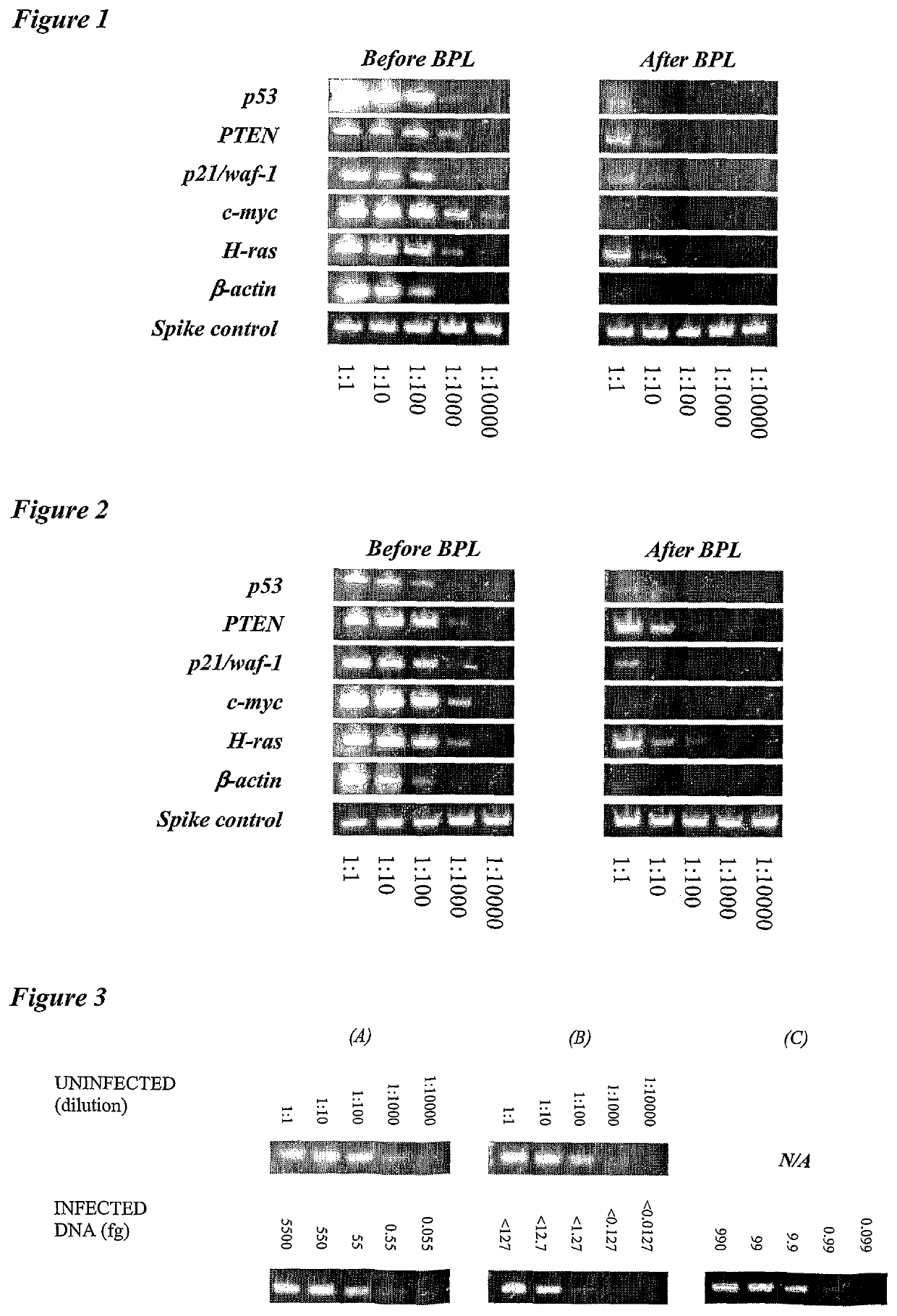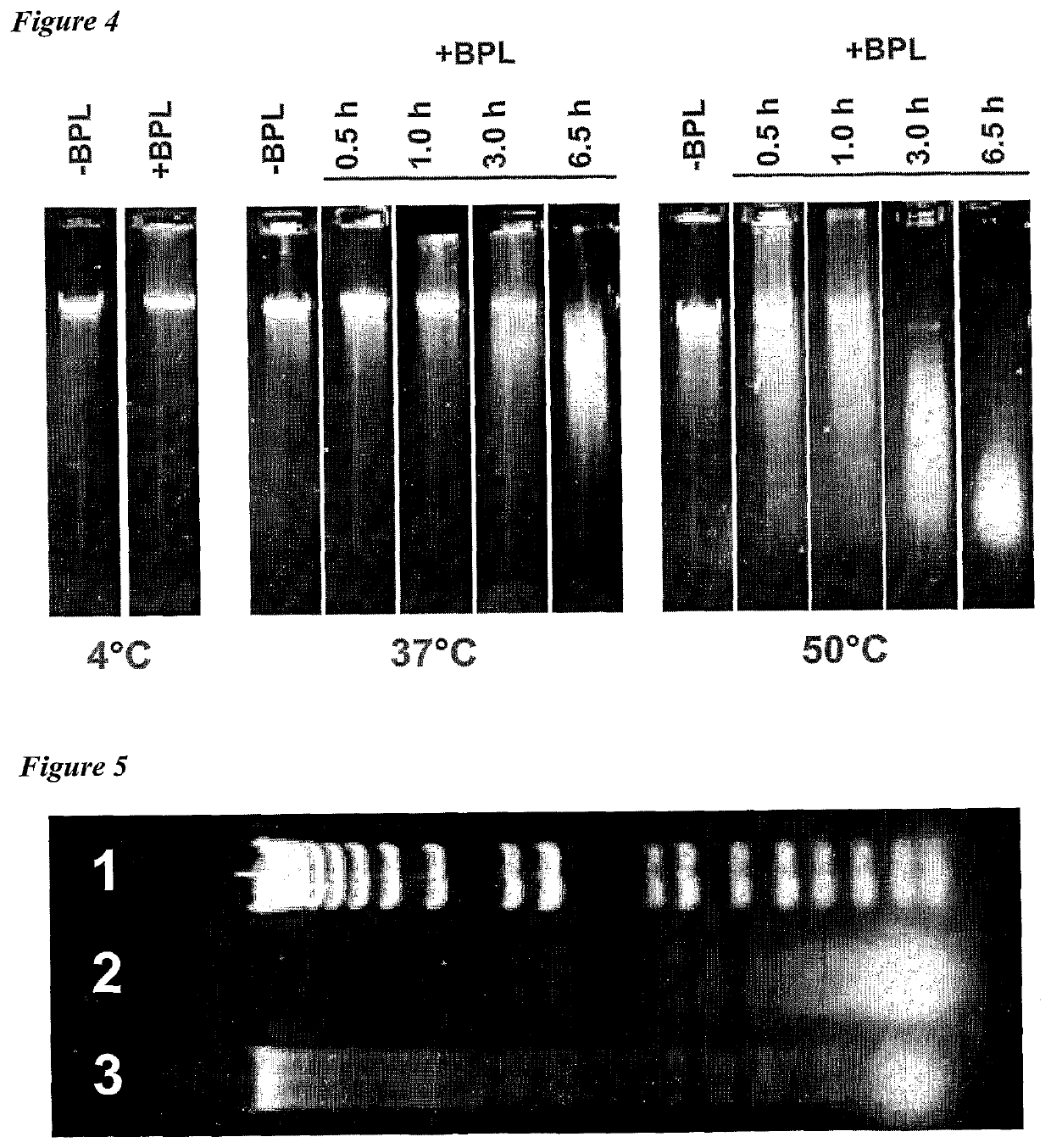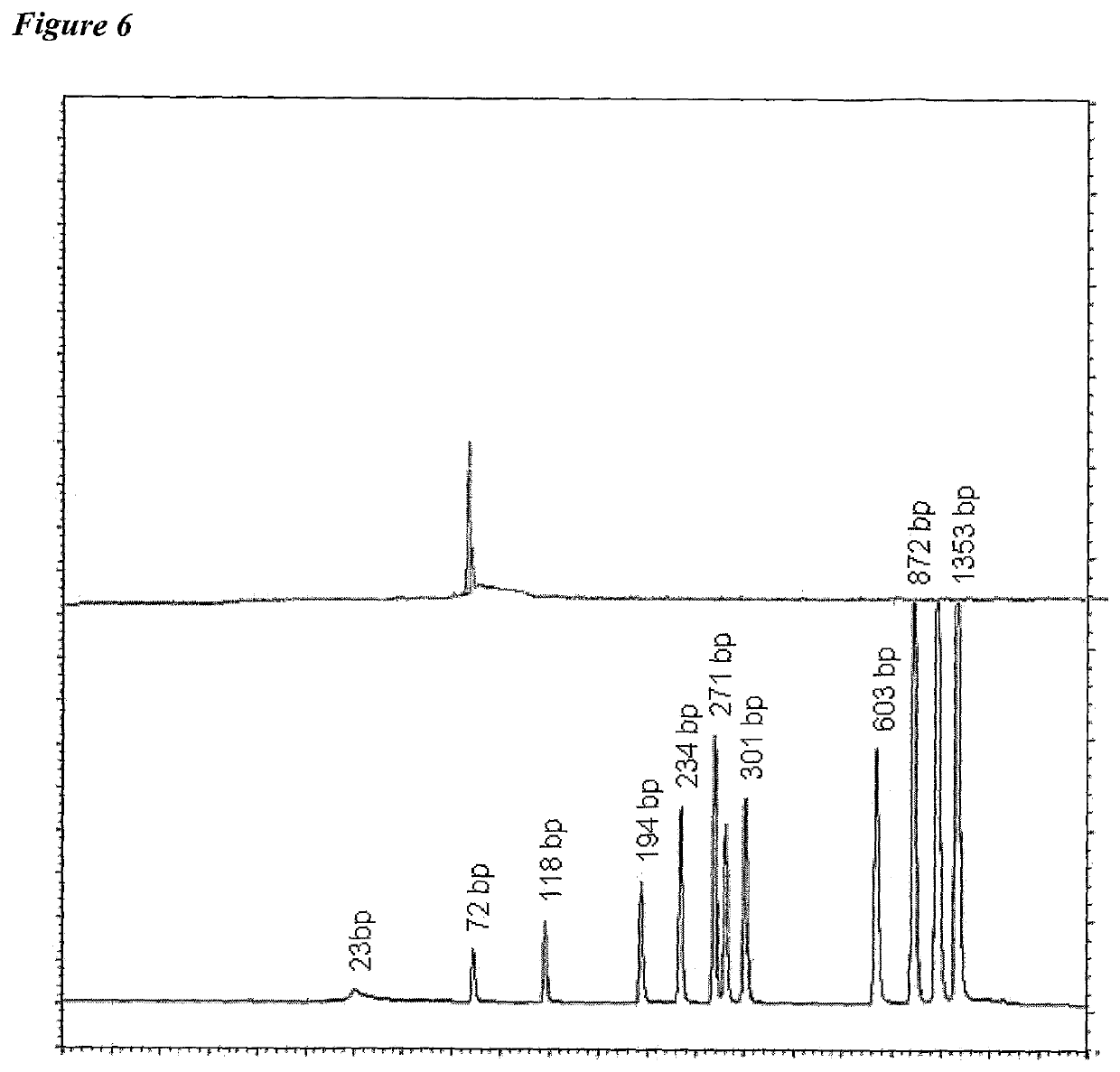Cell-derived viral vaccines with low levels of residual cell DNA
a cell-derived virus and residual cell technology, applied in the direction of antibody medical ingredients, drug compositions, immunological disorders, etc., can solve the problems of inefficiency, impracticality, and limited reproduction ability of cell cultures, and achieve the effect of enhancing the immune response (humoral and/or cellular)
- Summary
- Abstract
- Description
- Claims
- Application Information
AI Technical Summary
Benefits of technology
Problems solved by technology
Method used
Image
Examples
Embodiment Construction
[0011]The invention provides improved cell culture products and processes with reduced impurities. Specifically, the invention provides an improved method of degrading any residual functional cell culture DNA remaining associated with the cell culture generated product. According to the invention, residual functional cell culture DNA is degraded by treatment with a DNA alkylating agent, such as β-propiolactone (BPL). This process may be used to treat a range of cell culture products including vaccines and recombinant proteins.
[0012]The invention includes a vaccine comprising immunogenic proteins derived from a virus propagated on cell culture, wherein the vaccine is substantially free of residual functional cell culture DNA. In addition, the invention relates to recombinant proteins expressed in cell culture, where the final recombinant protein formulation is substantially free of residual functional cell culture DNA.
[0013]Functionality of any residual host cell DNA may be eliminate...
PUM
| Property | Measurement | Unit |
|---|---|---|
| temperature | aaaaa | aaaaa |
| temperature | aaaaa | aaaaa |
| temperature | aaaaa | aaaaa |
Abstract
Description
Claims
Application Information
 Login to View More
Login to View More - R&D
- Intellectual Property
- Life Sciences
- Materials
- Tech Scout
- Unparalleled Data Quality
- Higher Quality Content
- 60% Fewer Hallucinations
Browse by: Latest US Patents, China's latest patents, Technical Efficacy Thesaurus, Application Domain, Technology Topic, Popular Technical Reports.
© 2025 PatSnap. All rights reserved.Legal|Privacy policy|Modern Slavery Act Transparency Statement|Sitemap|About US| Contact US: help@patsnap.com



